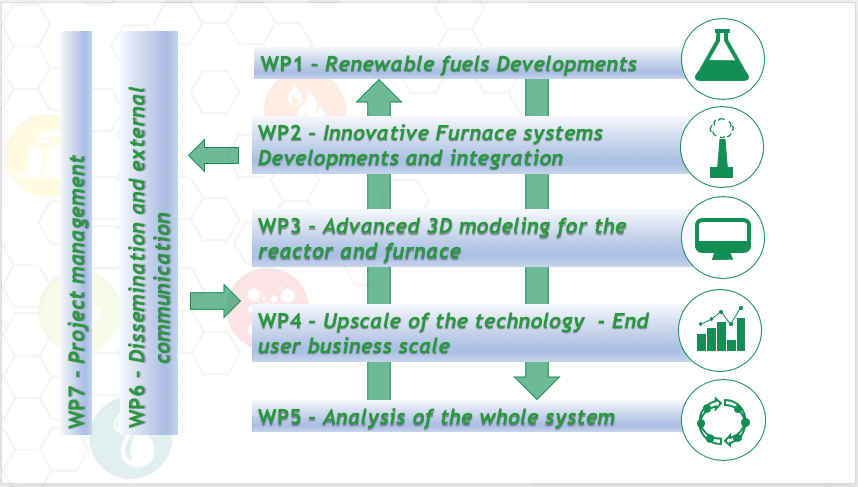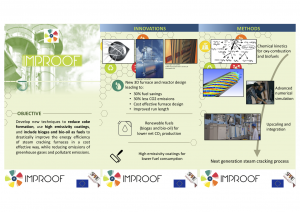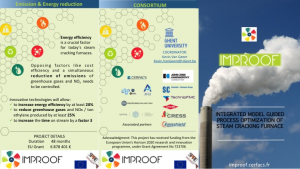The objective of IMPROOF was to drastically improve the energy efficiency of the radiation section of a steam cracking furnace by at least 20%, and this in a cost-effective way, while simultaneously reducing emissions of greenhouse gases and NOx per ton ethylene produced with at least 25%. Steam cracking is the most energy-consuming process in the chemical industry and globally uses approximately 8% of the sector's total primary energy. Improving the energy efficiency has an immediate pay-out because energy cost counts for approximately 70% of the net production costs in typical ethane- or naphtha-based olefin plants.
One of the most important ways to reduce the energy input in steam cracking furnaces per ton ethylene produced is to reduce coke formation on the reactor wall of the long tubular reactors that are mounted in these furnaces. The use of either advanced coil materials, combined with 3D reactor designs, improved process control, and more uniform heat transfer increases run lengths, reducing simultaneously CO2 emissions and the lifetime of the furnaces. Application of high emissivity coatings on the external surface of the radiant coils could further improve the energy consumption. IMPROOF has demonstrated the advantage of combining all these technological innovations, with an anticipated increase of the time on stream with a factor 3.
Specifically, the strategic objectives were:
- Energy consumption
- High emissivity coatings emitting in the non-absorbent flue gas spectrum (reduction of 10% radiative losses compared to state of the art)
- Enhanced heat transfer between flue gas and the process (reduction of 3% compare to state of the art) by 3D coils
- Novel radiant coil alumina forming alloy tubes that lower the coking rate leading to a lower outside tube temperature (reduction of 3% compared to state of the art)
- Novel integrated process design for the IMPROOF furnace (reduction of 15% of fuel consumption)
- Operating costs
- Increase production rates per ton olefins produced by increasing furnace combustion efficiency and by advanced process simulation (reduction of 10%)
- Increase production rates per ton olefins produced by selectivity increase using 3D reactor technology (reduction of 5%)
- Increase furnace availability and production rates per ton olefins produced because of reduced coke formation using advanced materials and 3D coil design (reduction of 3.5%)
- Reduce CAPEX and OPEX costs of the furnaces by at least 15%.
- Double refractory life, increase process tube life and decrease furnace downtime
- OPEX: 88 % is related to feed cost, which stresses the need for advanced optimization programs
- Reduction of NOX and CO emissions by at least 25%
- Decrease NOX and CO emissions by considering new burner designs, and oxy-fuel combustion (reduction of 30% and more)
- Decrease net CO2 emission by using biogas and bio-oil as fuel (reduction of 10% and more)
Project structure


